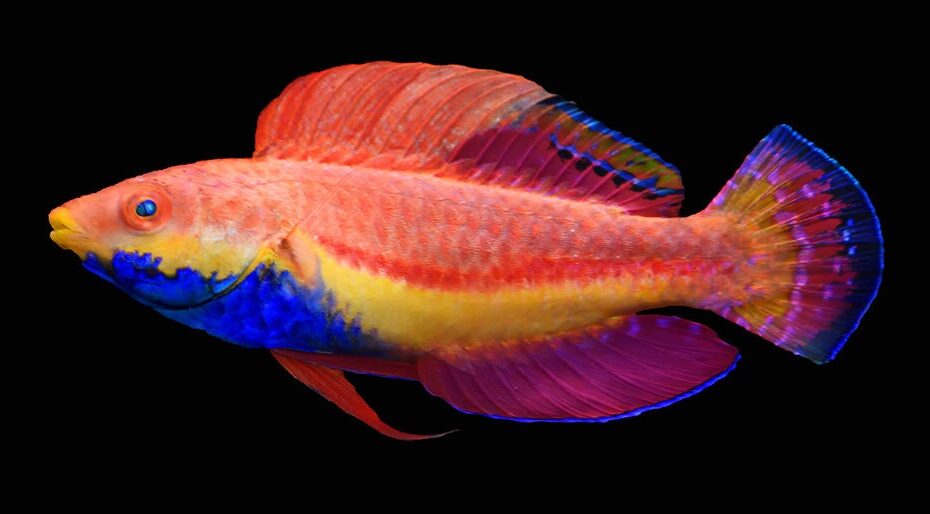Fairy wrasses are popular and colorful fish species known for their vivid colors, active swimming patterns, and generally peaceful demeanor. They belong to the genus Cirrhilabrus and are prevalent among reef aquarium hobbyists.
Appearance: Fairy wrasses display a dazzling array of colors and patterns. Males are typically more vibrant and colorful than females. They often exhibit bright blues, reds, greens, and purples. In many species, dominant males display more intense coloration and can change their hues during courtship or when feeling threatened.
Distribution & Habitat: They are predominantly found throughout the Indo-Pacific region, inhabiting coral reefs, especially areas rich in live rock and coral formations. These habitats provide ample hiding spots and feeding opportunities.
Diet & Behavior:
- Diet: Fairy wrasses are carnivorous. They mostly feed on zooplankton, including small crustaceans and other tiny marine organisms. In captivity, they should be provided with a variety of high-quality marine-based foods like mysis shrimp, brine shrimp, and other prepared foods.
- Behavior: These wrasses are active swimmers and display interesting behaviors, especially during courtship. They are diurnal, meaning they are active during the day and rest at night. At night, or when they feel threatened, they often dive into the sand or hide among the rocks.
Aquarium Care:
- Tank Size: Given their active nature, fairy wrasses do best in aquariums that are 55 gallons or larger.
- Tank Mates: They are generally peaceful, making them suitable for a community tank with other non-aggressive fish species. However, care should be taken when keeping multiple males in the same tank as they can be territorial with one another.
- Environment: A well-established tank with plenty of live rock and hiding spaces is essential. Fairy wrasses are known jumpers, so a tight-fitting lid or screen is crucial to prevent them from jumping out.
- Water Parameters: Maintain stable water conditions typical for marine tanks: temperature (72-78°F or 22-26°C), pH (8.1-8.4), and specific gravity (1.020-1.025).
- Health: Fairy wrasses are generally hardy but can be susceptible to typical marine fish diseases like marine ich. Quarantining new specimens and maintaining good water quality can help prevent diseases.
Conclusion: Fairy wrasses, with their lively behavior and radiant colors, can be an excellent addition to a saltwater aquarium. However, their specific needs in terms of diet and environment must be met to ensure they thrive in captivity.

